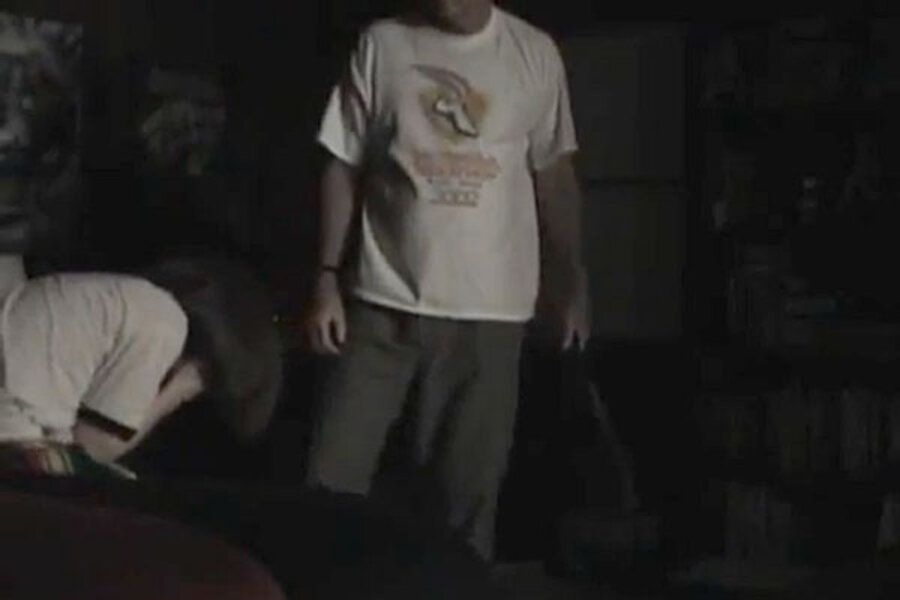Texas judge beating video: brutal lashing or parental discipline?
Loading...
| Atlanta
The YouTube video of powerful belt lashes administered by a Texas judge on his then-16-year-old daughter has given the US a stark, unvarnished view into the widely accepted – but, for many, brutal – parental practice of corporal punishment.
The judge in question, Aransas County Judge William Adams, cancelled hearings on Thursday and was seen packing his truck with belongings and rifles as threats against him mounted. While child-safety advocates have called for Judge Adams removal from the bench and local police say they've opened an investigation, many Americans have come to the defense of the judge, saying it's a parent's responsibility to discipline a child in order to shape character.
Yet the reaction to the brutality of the beating, which the now 23-year-old Hillary Adams posted in an attempt to get her father to seek help, also highlights changing societal mores. Even as state laws allow parents broad latitude in what researchers call "pro-social use of violence," support for "a good, hard spanking" has been declining for decades. From 1986 to 2008, it has declined from 83 percent to 70 percent, according to the General Social Survey conducted by NORC at the University of Chicago.
"I think the really powerful thing about this video is that, for a lot of people, this is child abuse, not corporal punishment, but the reality is that, under the statutory norms that exist in our society, this would not qualify as a crime or child abuse in any state in the country," says David Finkelhor, director of the Crimes against Children Research Center at the University of New Hampshire in Durham.
The video was filmed covertly by the daughter, Ms. Adams, who claims her father often beat her. The beating occurred in 2004 after Ms. Adams's parents found out she had illegally downloaded music from the Internet.
In the clip, Judge Adams says, "Go get the belt. The big one. I'm going to spank her now." As she wails and begs her father to stop, he lashes her with a belt across the legs. At one point he leaves the darkened room, then returns to resume the lashing.
“In my mind I haven’t done anything wrong other than discipline my child after she was caught stealing, and I did lose my temper but I’ve since apologized. It looks worse than it is,” Judge Adams told NBC's "Today Show."
Regionalism and class considerations create sharp disparities when it comes to views on corporal punishment, experts say. For example, all Southern states except Virginia allow corporal punishment in schools, while no states in the Northeast or on the West Coast do.
One recent study by Southern Methodist University researcher George Holden, which videotaped 37 north Texas parents, showed that nearly all hit or swatted their child in a 36-hour period. The finding was widely seen as the first accumulation of real-time spanking data.
Yet the kinds of beatings with belts and switches common in the US a few generations ago has largely died out, Mr. Finklehor says.
"What you saw in the video is probably something that half the population would have experienced a few generations ago, but children today are being raised with considerably less violence than in the past," he says.
To Francisca Ortega, a blogger for the Houston Chronicle's MomHouston blog, the video reveals both the inherent violence and intellectual reasoning behind corporal punishment.
"This is different," she writes. "This is not abstract, this is what an actual spanking looks like. Spanking advocates, for example, recommend parents do exactly what the father does: force the child to submit to the beating. This is the entire point of the punishment, not just the pain, but the submission to the will of the father."
The video could impact attitudes a parental discipline, Finklehor says. Simple and aggravated assaults against children have declined by two-thirds since 1990, according to the UNH center on child abuse. But, Finklehor adds, "I think actually there are some kinds of child-abuse images that we haven't seen enough of, and this is an example of that."
The video could also impact decisions more directly. For one, parents are going to wonder whether their behavior could be exposed and vetted, if not by the law, then by the court of public opinion. And children, too – especially web-savvy teenagers – will realize they have a new tool to use to combat beatings.





